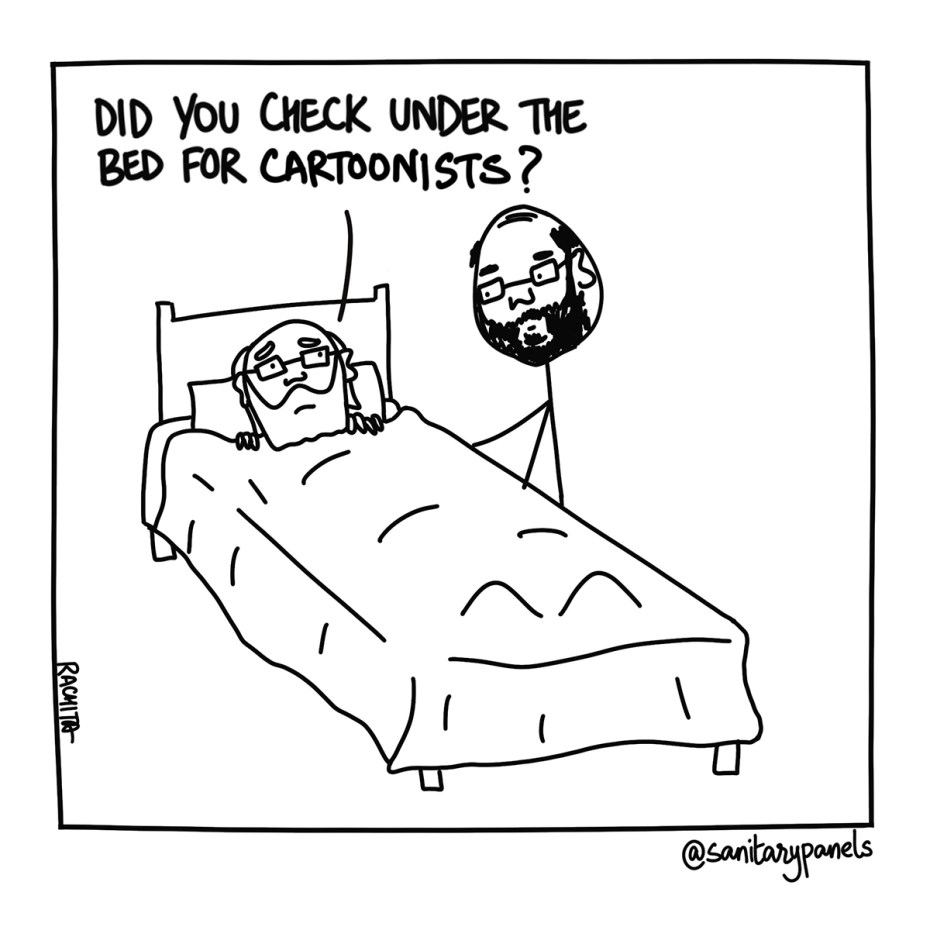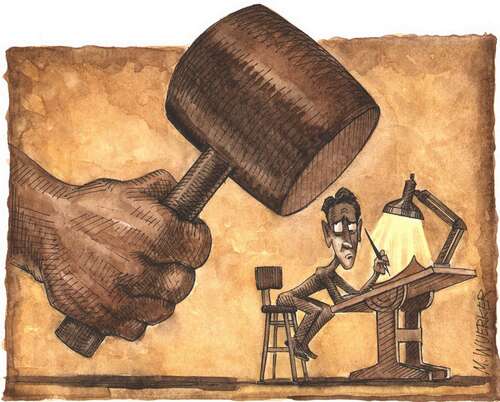Cartoonists Rights and Cartooning for Peace have jointly issued a report on the growing threat to the freedom of expression of editorial and political cartoonists around the world. The report is available here in English, and here in French.
[T]he most pressing threat to the free expression of cartoonists is authoritarianism. In regions all over the world, populist and nationalist governments have sought to conflate acts of protest with crime, even terrorism. Wherever the most natural impulse of conscience – to voice dissatisfaction with one’s own government – is regarded with suspicion and framed as harmful to the fabric of the state, cartoonists’ careers will face an existential threat.
And so will their freedom and lives.
Among the examples of cartoonists in peril for their work described in the report:
- Rachita Taneja has been under prosecution in India for her work concerning “patriarchy, nationalism, intolerance, misogyny and authoritarianism” since 2020, and could face up to six months in prison if found guilty.

- Zehra Ömeroglu has faced a criminal case of obscenity for her satirical cartoon since 2020, with a jail term of six months to three years at stake.
- Fahmi Rehzahas been repeatedly arrested, interrogated, searched, and jailed for his satirical cartoons in Malaysia, such as depicting a prime minister as a clown.
- The cartoonists of the Cuban publication elToque were interrogated in 2022 and forced to broadcast false admissions that subject them to prosecution.
- Gabor Pápai in Hungary used an image of Jesus on the cross in 2020 to satirize the government’s minimization of Covid deaths, and was forced to publish an apology, with his newspaper required to pay a fine.
- Emad Hajjaj was arrested and jailed in Jordan in August 2020 for a “cybercrime” for depicting United Arab Emirates Crown Prince Mohamed Ben Zayed Al Nahyan in a cartoon that supposedly “‘harmed relations’ between Arab nations.” Proceedings were suspended without a trial, but he lives under the shadow of their reactivation.
I find it ironic that at a time when political cartoonists are struggling to maintain their exposure, stature, and economic viability, they seem to be increasingly on the front line of threats from government persecution and extremist violence.


